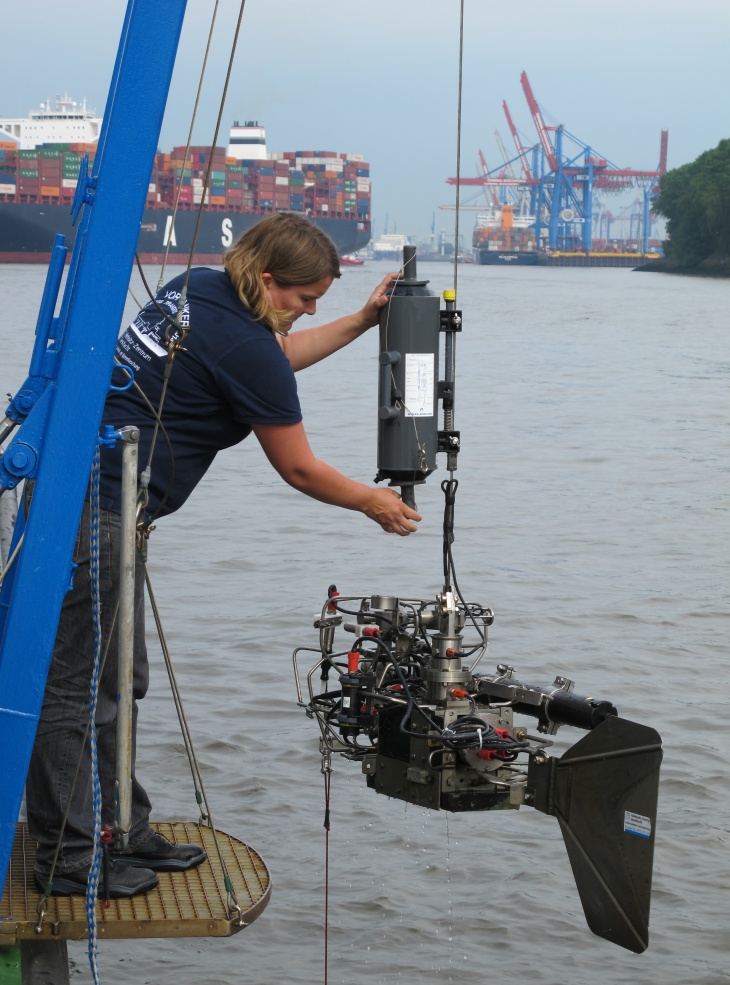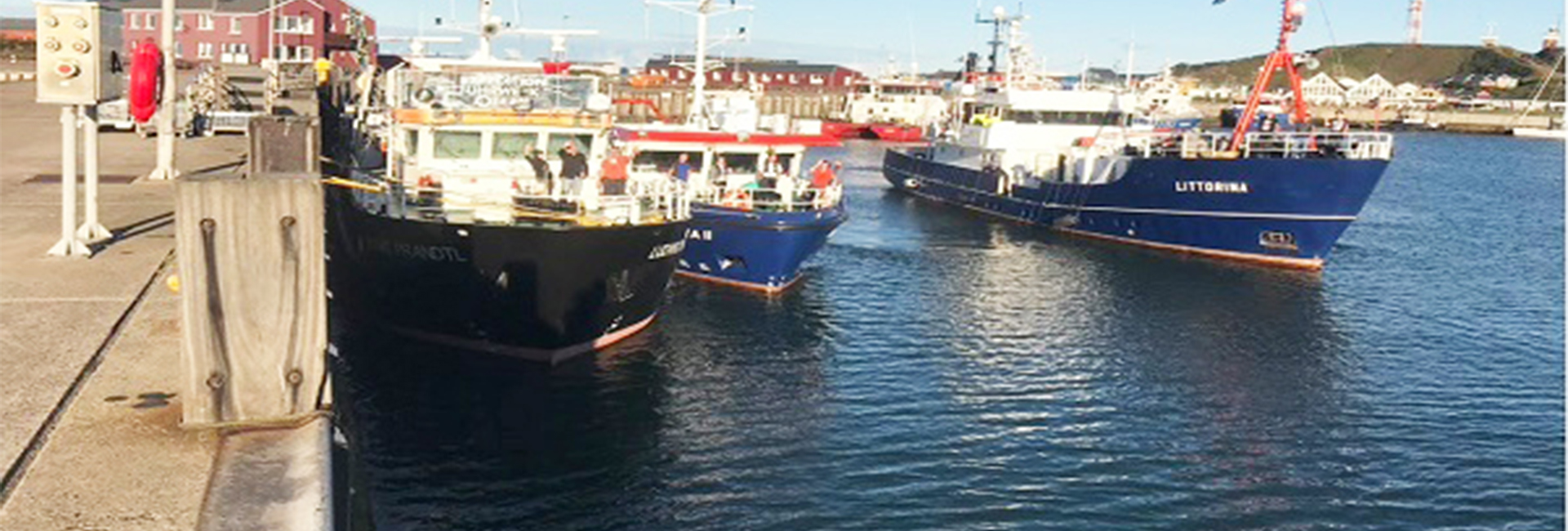What influence does the Elbe have on the German Bight?
Germany's North Sea coast is strongly influenced and partly polluted by river discharges from industrial sources, agriculture or sewage treatment plants via the Elbe. These pollutants are altered along the course of the river due to inflows—but also due to degradation and deposition processes in the river and estuary. Over the next few weeks, researchers from several Helmholtz centers will study, across systems, how the concentration and composition of environmental chemicals, nanoplastics and microplastics as well as nutrients and greenhouse gases change during their passage to the North Sea.

Hereon researcher Tina Sanders is very experienced when it comes to water sampling on campaigns. Photo: Hereon/ Tina Sanders
Joint Communication: Alfred Wegener Institute, Helmholtz-Zentrum für Polar- und Meersforschung, Helmholtz-Zentrum Hereon and GEOMAR Helmholtz Centre for Ocean Research Kiel
The measurement campaign spans several months and is carried out in the framework of the MOSES (Modular Observation Solutions for Earth Systems) research initiative. The expedition commenced at the end of June in the Czech Republic and will end in the German Bight in mid-September. From August 23 to 25, the Helmholtz-Zentrum Hereon’s research vessel LUDWIG PRANDTL explored the topic between Geesthacht and Cuxhaven. From August 28 to September 15, three coastal research vessels from the Alfred Wegener Institute, Helmholtz-Zentrum für Polar- und Meeresforschung (AWI), the GEOMAR Helmholtz Centre for Ocean Research Kiel and Hereon will be employed one after the other to sample the southern North Sea between Büsum, Helgoland and Cuxhaven in the service of science.
The elaborately coordinated cruises on the Elbe and the North Sea aim to follow a defined "water package", which has already been investigated in the riverine (freshwater) area of the Elbe since the end of June. The scientists now measure this “package” during the transition into the saline coastal area and into the North Sea. The Elbe estuary, i.e. the part of the Elbe that is influenced by the tide and extends from Geesthacht to Cuxhaven, plays a special role here. Estuaries are characterized by a filter function between the river and the sea: Here, organic substances are decomposed, converted or sedimented. Due to the tidal influence, the residence time of the water in the estuary is significantly longer than in the river itself.
In the North Sea, the "water package" is then tracked in the estuary with the help of transponders that drift along with the water package and regularly report their position by radio. The research ships constantly track the position of these signals and can take targeted water samples where the transponders are located as well as take detailed probe measurements of the substance concentrations at the respective location. For the studies, three "swarms" of three to four transponders each are released in the Elbe outflow off Cuxhaven. The ships follow the freshwater coming from the Elbe, which initially stratifies mainly at the surface of the coastal water and then increasingly mixes with the North Sea water both in the surface but also in the water depths. The ships will track the transponder swarms, which will also slowly spread over the area, and then be able to analyze the pathways and also the slow dissolution of the Elbe "water parcel" in the estuarine and North Sea areas. The scientists hope to be able to track the changes and mixing of the water parcel with North Sea water in the coastal area, as well as to analyze in detail the fate of dissolved or particulate matter in the water parcel.
Since it is not yet known exactly how the Elbe water behaves in the North Sea, the research vessels cannot follow a predefined route, but must repeatedly search for and sample the water package marked with the transponders. Devices that have been newly developed within the framework of the Helmholtz project MOSES are used for this purpose, which record and visualize data with high temporal resolution in real time. One of the new measuring instruments is, for example, a fully equipped MOSES laboratory container with special sensors, which, fully assembled, is passed from ship to ship. This particular measurement container will first be picked up in Cuxhaven by the Hereon’s LUDWIG PRANDTL research vessel. After a week tracking the transponders, the measurement container will be passed on to the GEOMAR’s LITTORINA and after another week to Alfred-Wegener-Institute’s MYA. This ensures that uniform measurement sensors are used and the data obtained is consistent and comparable.
In addition, each research vessel and participating research center has its own scientific focus. The AWI focuses on the exact measurement and analysis of the distribution of the greenhouse gases methane and CO2 and their input into the atmosphere. GEOMAR mainly investigates the inputs of pollutants from the Elbe River into the German Bight, using a newly developed sampling system to take water samples for a variety of pollutants, including TNT and mercury. Hereon is contributing additional expertise in microplastic sampling, heavy metals, dissolved carbons, and nutrient inputs, and UFZ, which was responsible for the first phase of the project on the Elbe River, will analyze additional water and sediment samples.
All this work and expertise together makes an vital contribution to the long-standing MOSES environmental observations in the Elbe and German Bight area and also to a new project of the Deutsche Allianz Meeresforschung (DAM) called "ElbeXtreme", which will investigate the effects of extreme events on the German coastal system starting in 2024.
Further Information
Contact
Scientist
Phone: +49 (0) 4152 87-1523
Institute of Carbon Cycles
Helmholtz-Zentrum Hereon
Press Officer
Phone: +49 (0) 4152 87-1648
Communicaton and Media
Helmholtz-Zentrum Hereon
